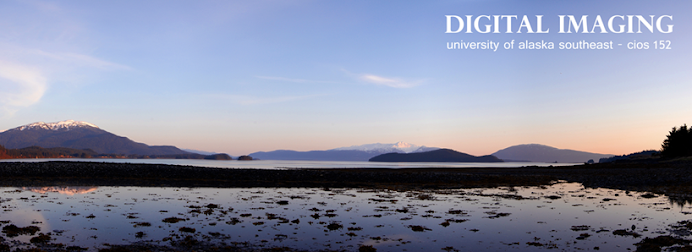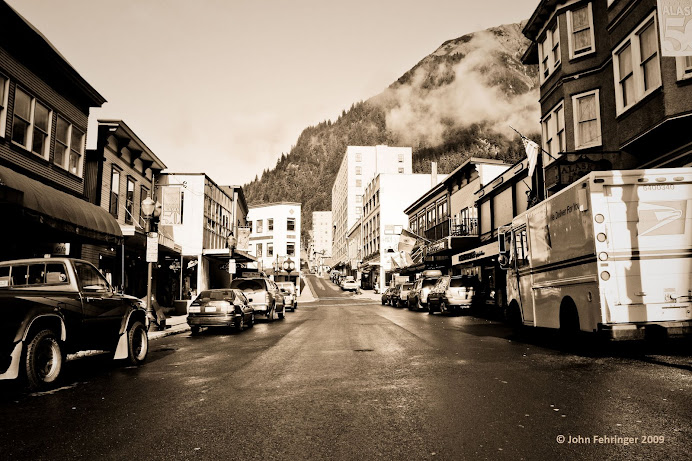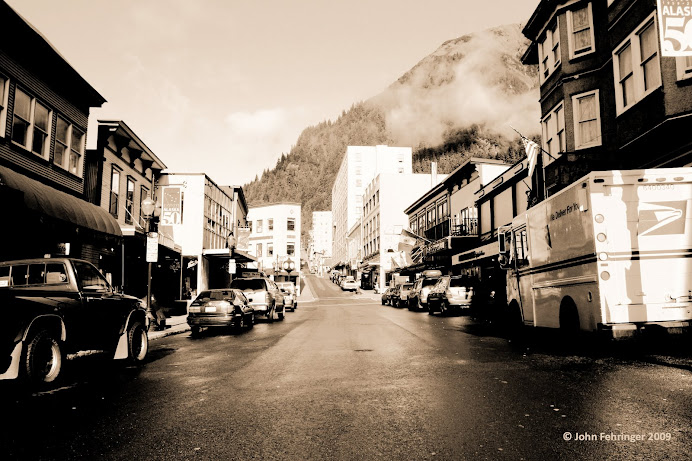This project was a little more technical than the past few and I ended up learning a lot.
Original Photo
I used the same photo for all three compositions in this project to emphasize the differences between the techniques used in each. This photo is of Presley, one of our family dogs, and was shot by my brother James in Anchorage.
Composition 1: Adjustment Layers and Layer Masks
My goal for the first project was to give depth to this picture. I did this by increasing the detail of the foreground image, while decreasing the detail of the background. To accomplish these adjustments to different areas of the picture I used a layer mask.
First I created a new adjustment layer and adjusted curves. Next I added a layer mask to the curves layer. I then created a new layer above the curves layer, filled it with white, and turned the opacity down to about 75% to reveal the foreground image underneath it. Going back to the layer mask, I painted around the foreground image in black to create a mask that would block out the curves adjustment for the background while fully showing the foreground image.
Occasionally I got mixed up about which layer I was supposed to be painting on, as you can see in the video, but in the end I figured it out without too much trouble. So then I had a layer mask that effectively isolated the background from the foreground, allowing me to make changes to each independently. I applied a watercolor filter to the background layer and made adjustments with shadows and highlights to increase the detail of the foreground image. Last I changed the opacity back to 100% on the topmost layer and experimented with different gradient map effects; finally settling on a bronze color that I felt best accented the colors in the foreground image. I was torn between the bronze and a higher contrast black background, but in the end I went with the bronze. I recorded the whole process and set playback to 300% speed. You can watch it here, feedback welcome.
Composition 2: Using a Layer Mask as a Stencil
For the second composition I used a layer mask to create a stencil effect. I created a tonal map by using selections of shadows and midtones from Select - Color Range. I then used the Fill command to fill the midtone selections with 50% gray and the shadows with 100% black. I merged these two layers to create the tonal map. Next I created a new layer that I filled with a white background, making sure to turn off preserve transparency. I then added a layer mask to that layer and copied the tonal map onto the layer mask (selecting it by holding down the alt key) and inverted the image. Next, I moved from the layer mask to the layer thumbnail and painted with the brush to reveal the stenciled image. I recorded this process and you can watch it here.
Composition 3: Creating a Textured Type Effect with a Layer Mask
For the textured type composition I created a tonal map and a new layer and layer mask through the same process as in composition 2. Then I copied text from a word document onto the new layer, creating a text layer. Next I copied the tonal map onto the layer mask and inverted the image. Combining the text and tonal map mask created a nice textured effect. I thought the effect would be improved by adding emphasis to the foreground image so I copied it (with only a little trouble as you can see in the video) into a version of composition one to use the background mask I had created there. I then applied a black and white gradient map to the background to unify and add emphasis to the black and white foreground image.
By this point I felt fairly comfortable with the layer mask process as well as the associated keyboard/mouse shortcuts. The creation of the third composition went significantly smoother that the first and is my favorite of the three. That’s always a good indicator of progress for me. I recorded the process and you can watch it here, feedback welcome.
I feel like I am just getting started with layer masks and have made some good initial progress. This assignment really helped me to get the basics down. Developing it will take some practice like everything else in PS. If you have time to check out the videos I posted to YouTube I think they are an effective way to share our experiences. The one John posted definitely helped me to better understand these concepts.
















.jpg)




No comments:
Post a Comment